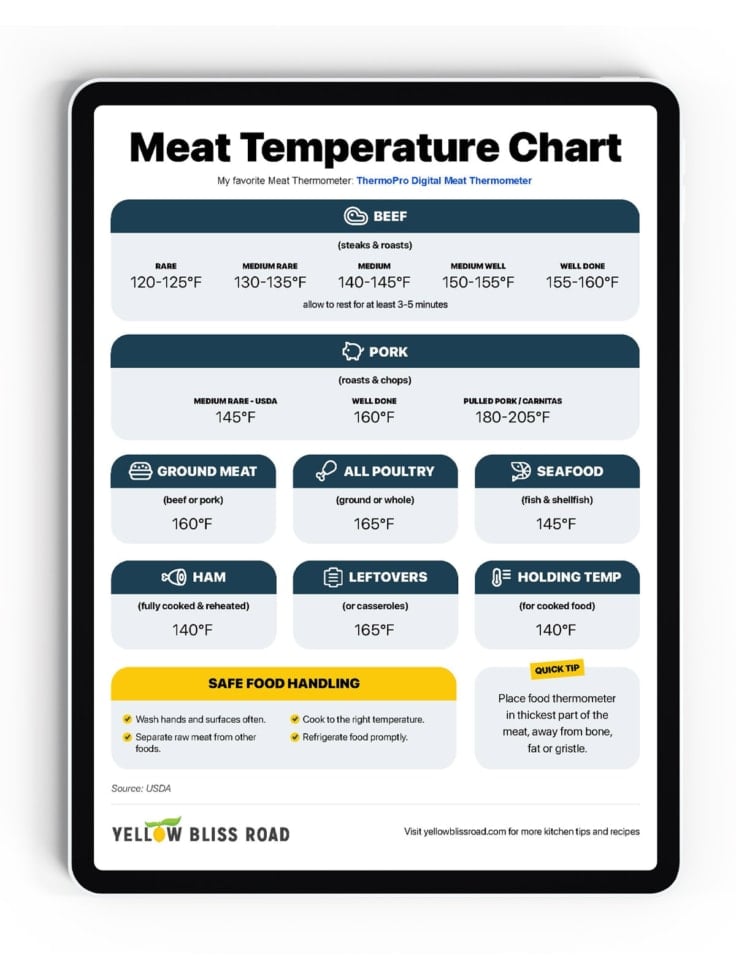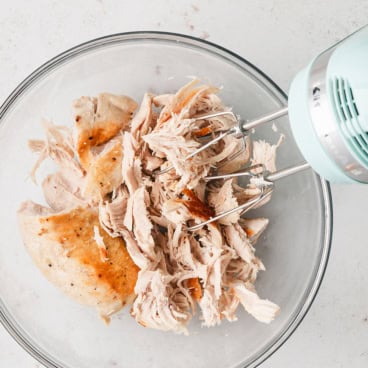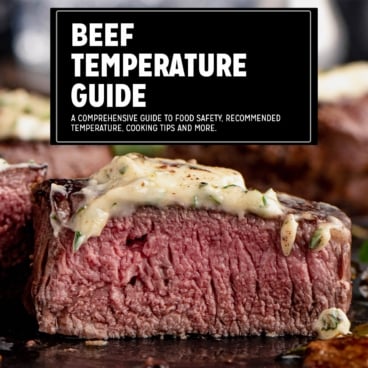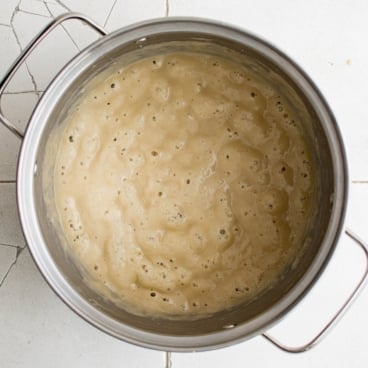This post may contain affiliate links. Please read our disclosure policy.
This Meat Temperature Chart will teach you the proper internal temperatures for all different types of meat. Understanding food safety is crucial to keeping your family from getting sick!
Print out the handy chart to keep in your kitchen, or access it online, and save this post – it’s full of important food safety tips!
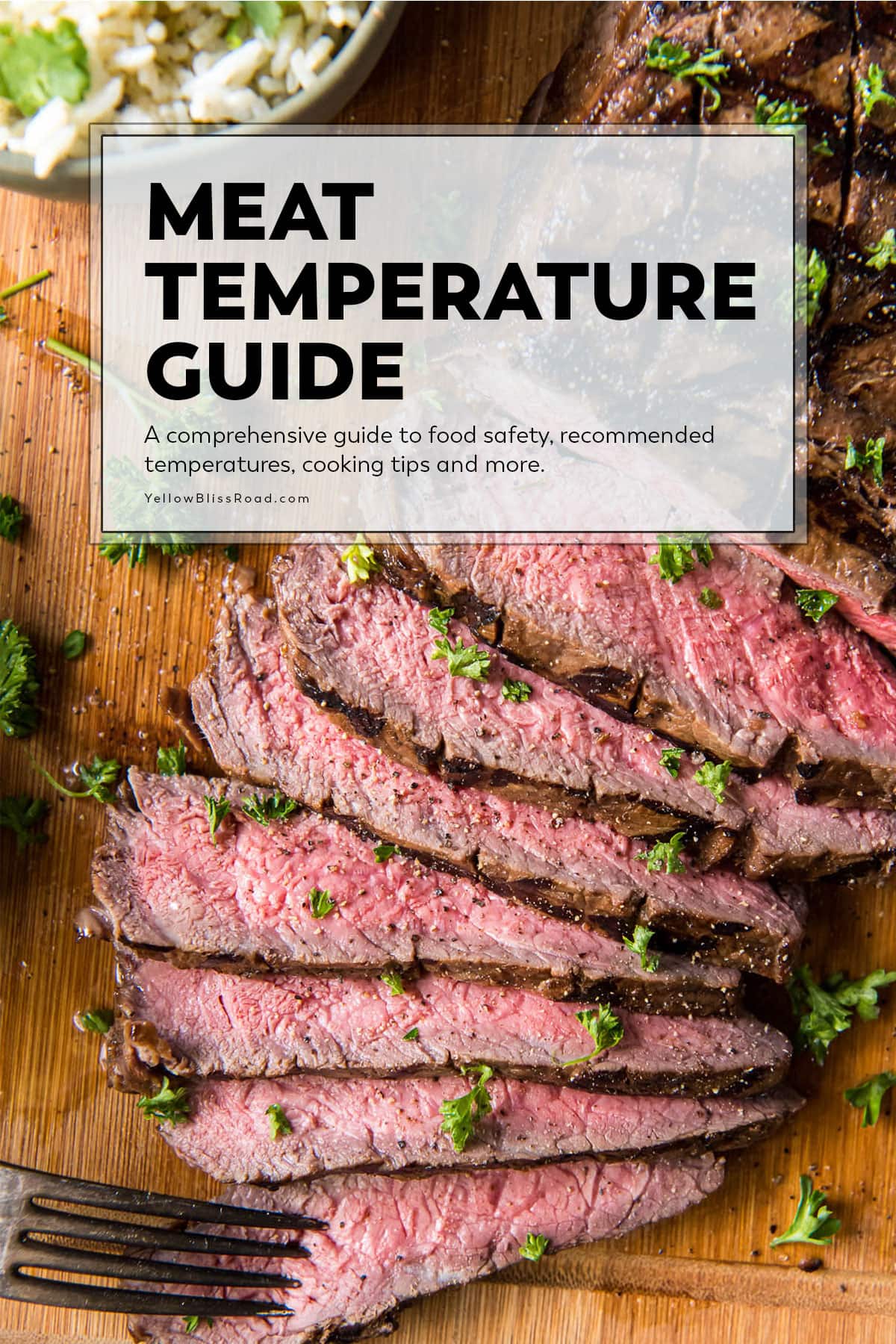
Printable Meat Temperature Chart
Knowing the proper internal temperatures for chicken, beef, and pork is important when you’re a home cook. Eating meat that’s not cooked properly can lead to serious illness caused by harmful bacteria in your food.
In this post you will learn about safe temperatures for food and other food safety tips so you can keep your family safe and healthy!
But first, here’s a handy meat temperature chart you can print out and hang in your kitchen or quickly pull up on your phone or iPad when you’re cooking to ensure that all of those delicious meals you’re making are 100% safe!
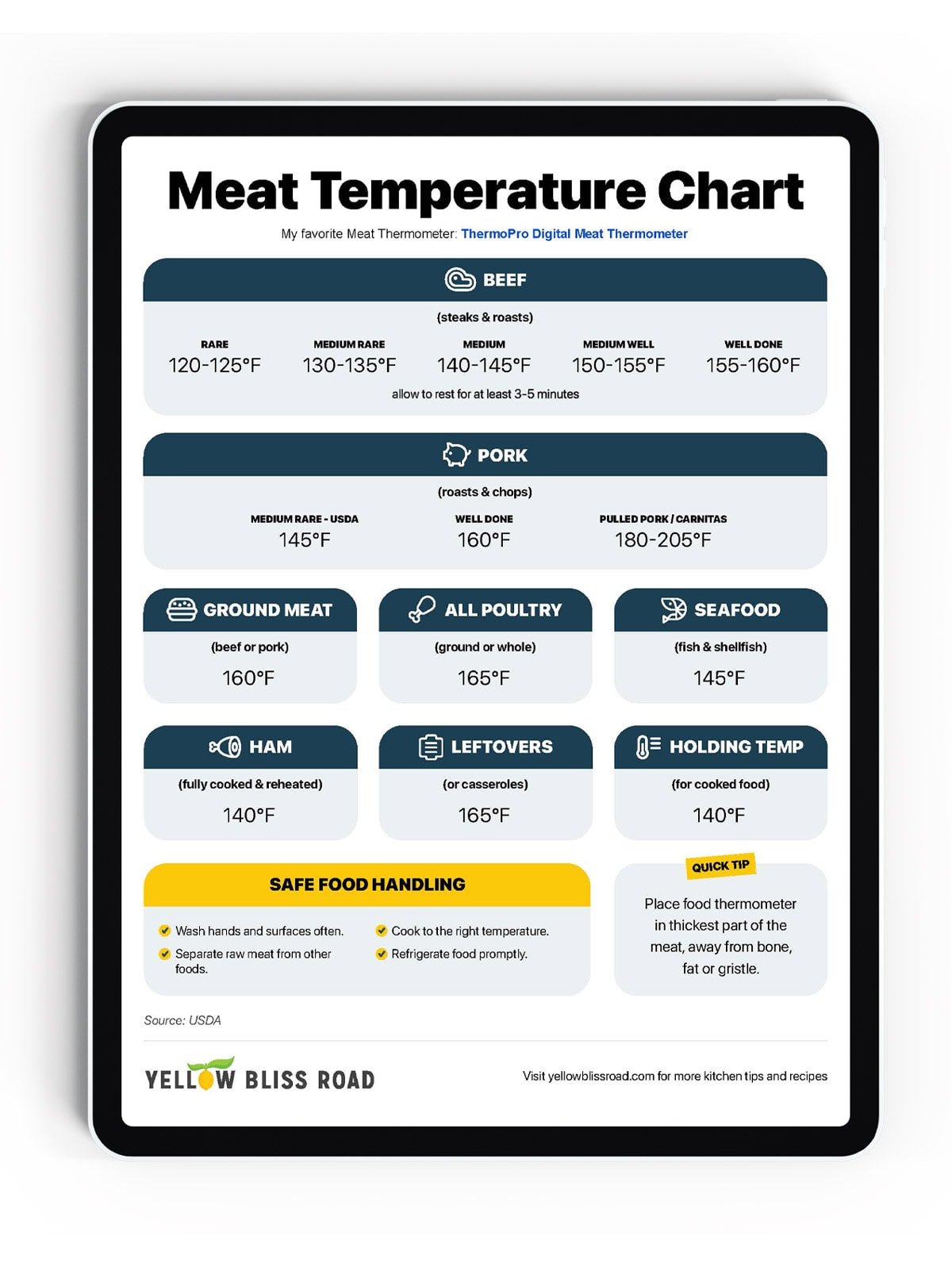
Always Cook Meat To A Safe Temperature
When you’re cooking, do not rely on the appearance or feel of the meat, or the color of meat in the middle. Using the internal temperature is the safest way to go!
In the interest of food safety, always cook your food to the FDA recommended internal temperature. I highly recommend having a meat thermometer in your kitchen to make getting the internal temperature easy.
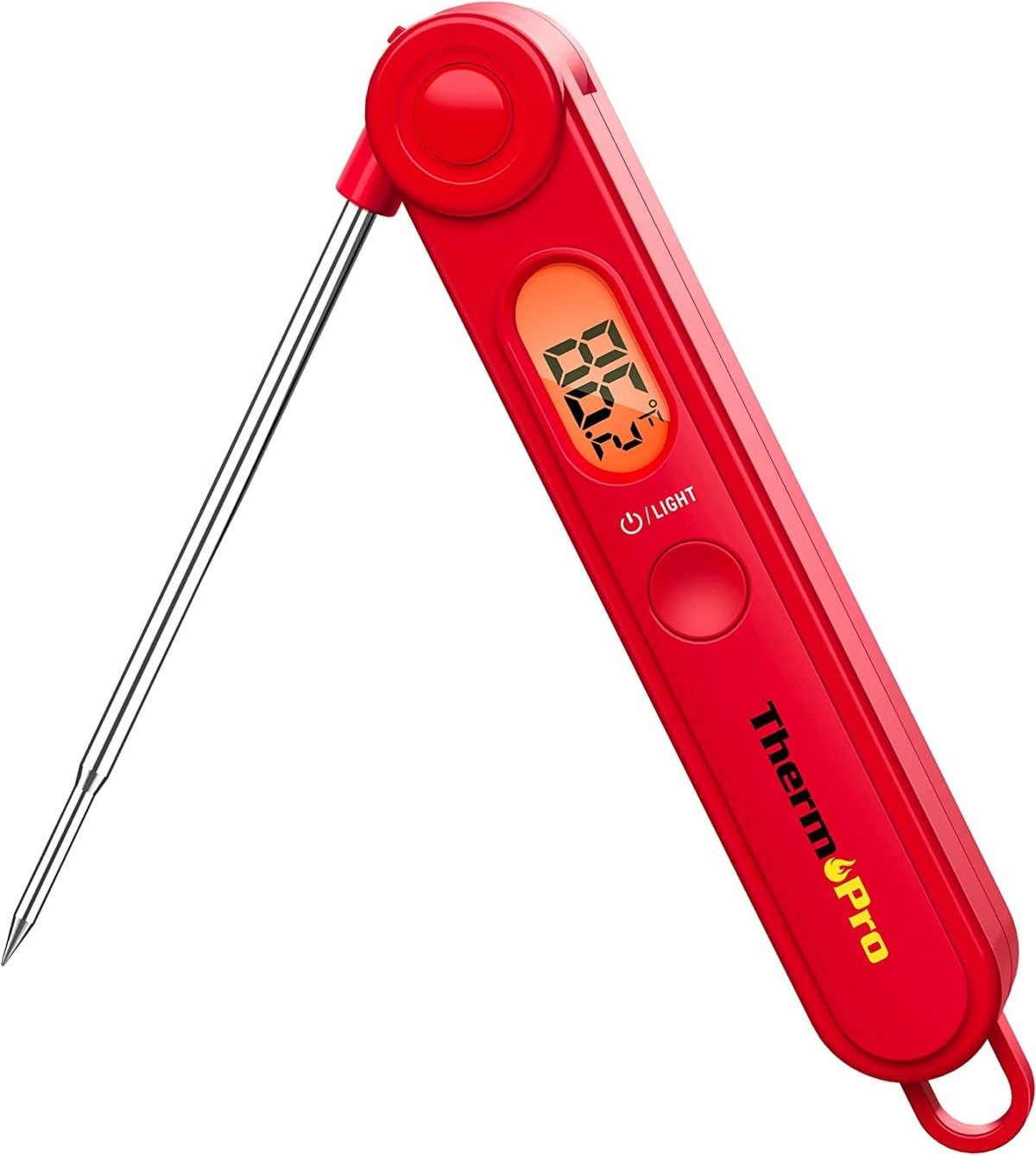
Thermopro Digital Instant Read Meat Thermometer
I highly recommend investing in a meat thermometer for your kitchen. It’s very affordable and often on sale! This is the one I’ve used for years and it has a hundred thousand positive reviews.
How To Use A Meat Thermometer
Using a meat thermometer is handy because it can ensure that your expensive steak, chicken or turkey doesn’t wind up overcooked and dry.
It’s especially crucial to check the internal temperature of your meat to ensure that it’s fully cooked. You don’t want pesky bacteria getting in the way of your dinner plans!
When taking the temperature, make sure to place the thermometer in the thickest part of the meat, away from bone, fat, or gristle. If you take the temperature of a thinner part, the thicker parts may not be fully cooked and you won’t get an accurate read.
Expert Food Safety Tips
Keep Hands And Surfaces Clean – When handling raw meat, it’s important to wash hands and surfaces often to avoid cross-contamination.
Use A Separate Cutting Board Just For Meat – It’s best to use a designated plastic cutting board that is dishwasher-safe for raw meat and save your wood cutting board for produce.
Separate Raw Meat From Other Foods – When storing in the fridge and when getting the ingredients ready, it’s important to keep the raw meat from other ingredients to avoid cross-contamination. When I store raw meat in the fridge, I like to keep it on a plate or sheet pan in case the package leaks.
Refrigerate Food Promptly – When you bring raw meat home from the store, it’s important to immediately place it in the fridge or freezer.
Reheat Leftovers Until Hot – When you go to reheat leftovers (in the microwave or oven), you want to reheat them until they are hot (165 degrees F) and even steaming.
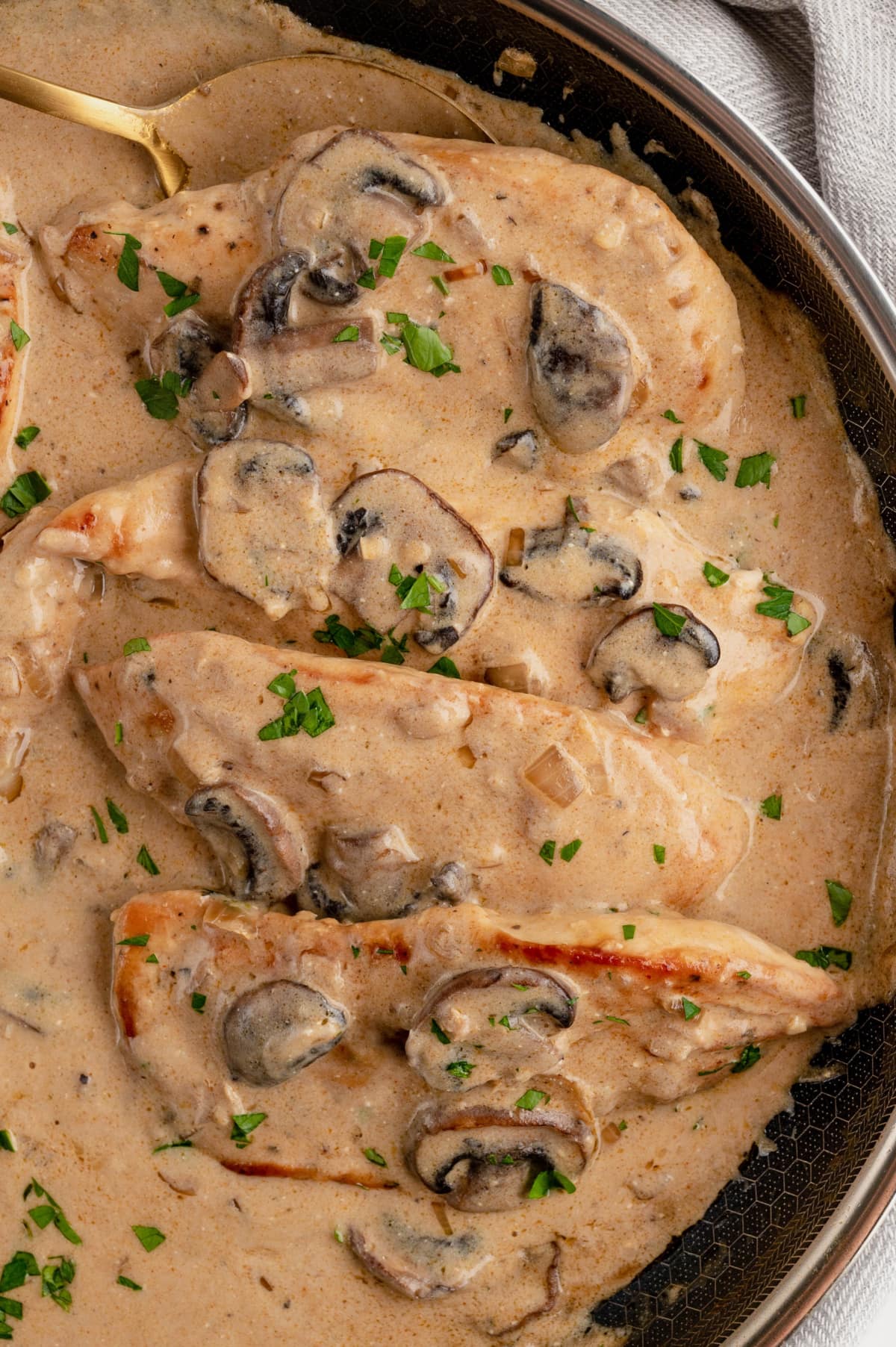
Chicken and Poultry
It is especially important to use safe food handling practices and cook chicken to an internal temperature of 165℉. The FDA is very clear on this to avoid the risk of salmonella poisoning. This includes all cuts of chicken (ground chicken, whole chicken, or pieces like breasts and thighs).
Additional tips:
- Juices should be clear (not pink or red).
- When you cut into it, the meat should be opaque, but a little pink is ok as long as the internal temperature is at least 165℉.
- The safe cooking temperatures for turkey are the same as for chicken.
- Color does not indicate doneness – always use a meat thermometer to ensure proper temperature.
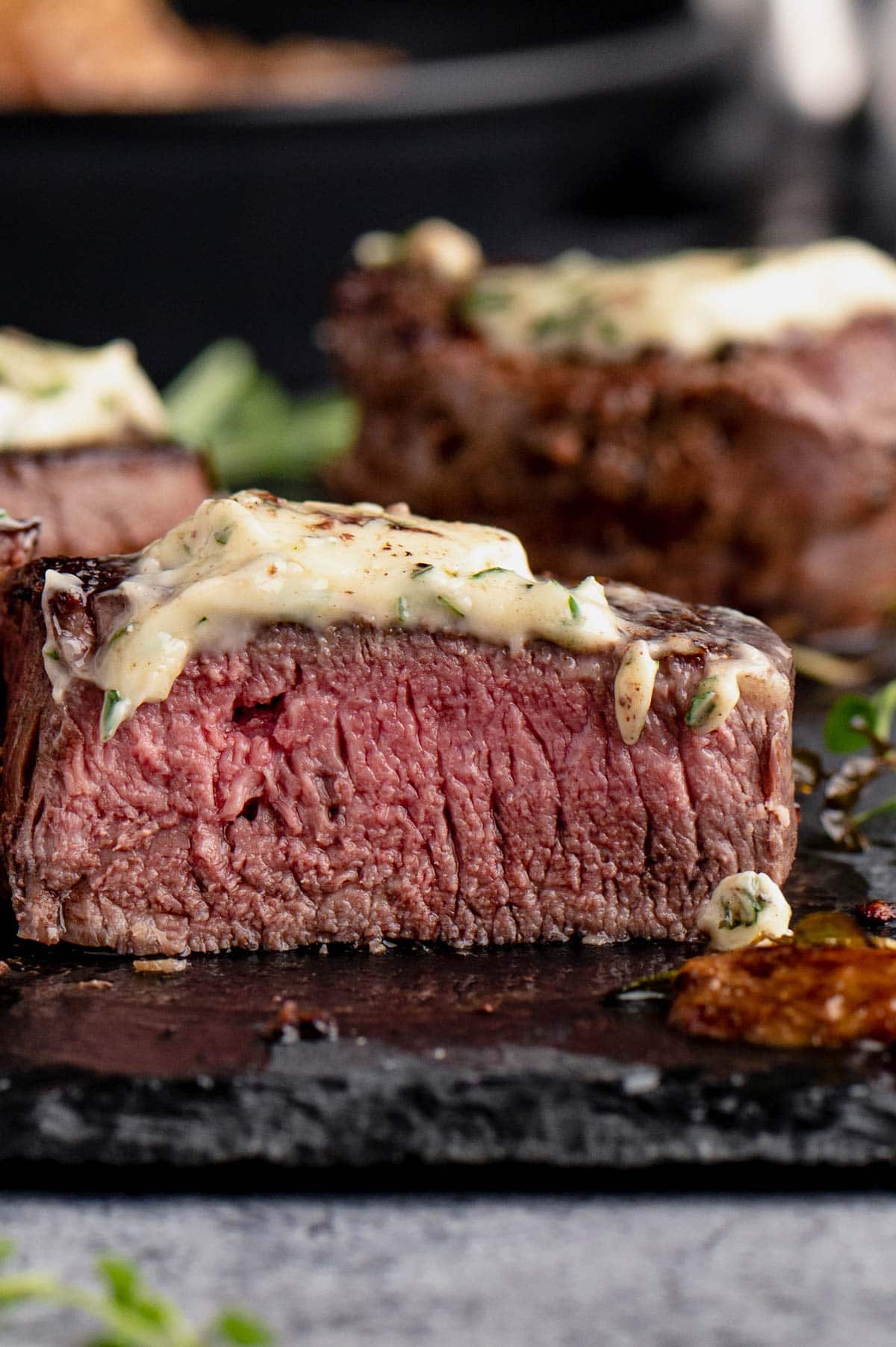
Internal Temperatures For Steaks And Beef Roasts
The safe temperature to cook beef varies by type of beef (steak vs ground) and your personal preference (medium vs well done).
Allow beef roasts and steaks to rest for at least 3-5 minutes so the juices can redistribute. It’s best to remove the meat from the heat when it’s 5 degrees lower than the desired temperature as the internal temperature will continue to rise as the meat rests.
- Rare: 110°F – 120°F
- Medium Rare: 120°F – 130°F
- Medium: 130°F – 140°F
- Ground Beef: 160°F
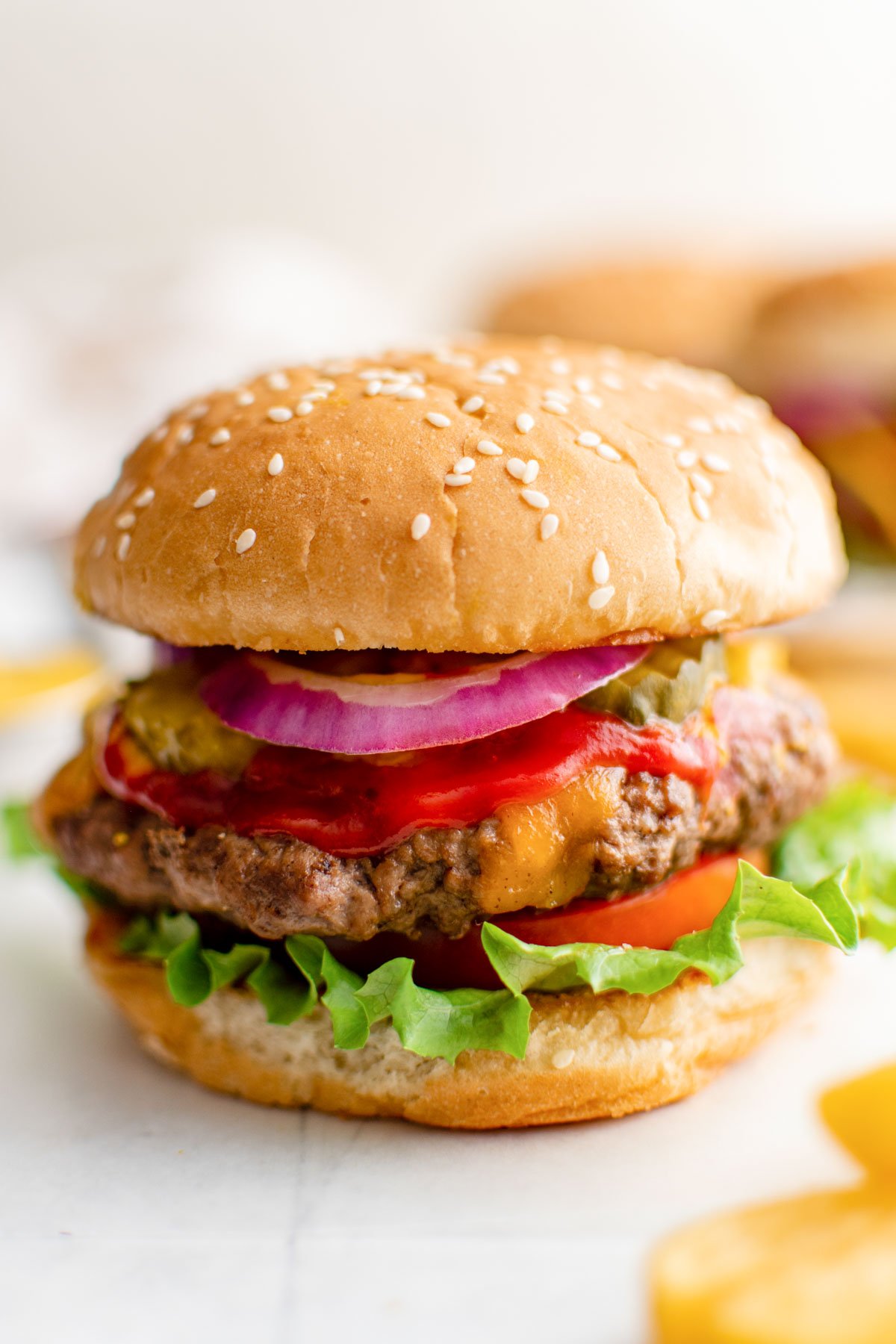
Internal Temperature For Ground Meat (Burgers, Meatballs, Meatloaf)
While steaks and roasts can be cooked to a lower temp to be rare or medium rare, ground beef should be fully cooked to well done.
According to the FDA and the USDA, all types of ground meat should be cooked to 160℉. This includes ground chicken and turkey, ground pork and ground beef, as well as meatballs, hamburgers, and meatloaf.
If you were to order your burger medium-rare at a restaurant, it would come slightly pink and just warm in the center. Unfortunately it can also come with a little bacteria on the side. When meat is ground up there is a lot more surface area for bacteria to grow, so it is recommended to eat ground meats at a well done temperature of at least 160℉.
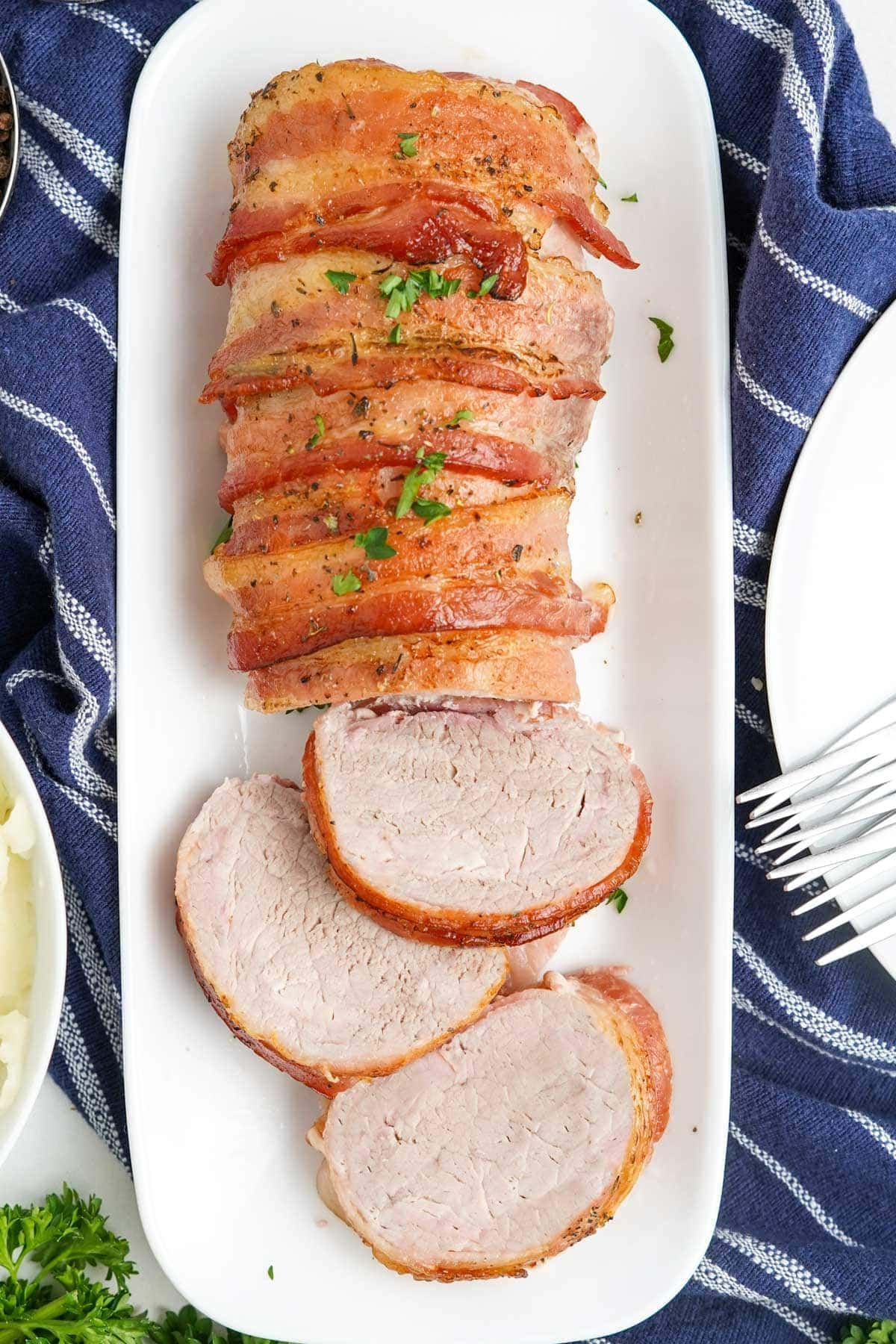
Internal Temperatures For Pork
Like beef, the safe temperature to cook pork varies by type. It can be extremely easy to overcook, so it’s extra important to keep an eye on that internal temperature so your meat will be tender and juicy.
You can remove pork from its heat source when it reaches about 3℉ below the recommended temperature. As it rests, the temperature will rise 3-5 degrees.
- Ground Pork: 160°F.
- Pork Roasts and Pork Chops can vary by preference but should be cooked to an internal temperature of at least 145°F, or medium rare. If you prefer your pork to be well done, cook to an internal temp of 160°F.
- Pulled Pork and Carnitas: 180-225°F. These roasts are cooked to a higher temperature to become tender and shred easily.
- Ham (Fully Cooked): 140°F.
Most Popular Pork Recipes:
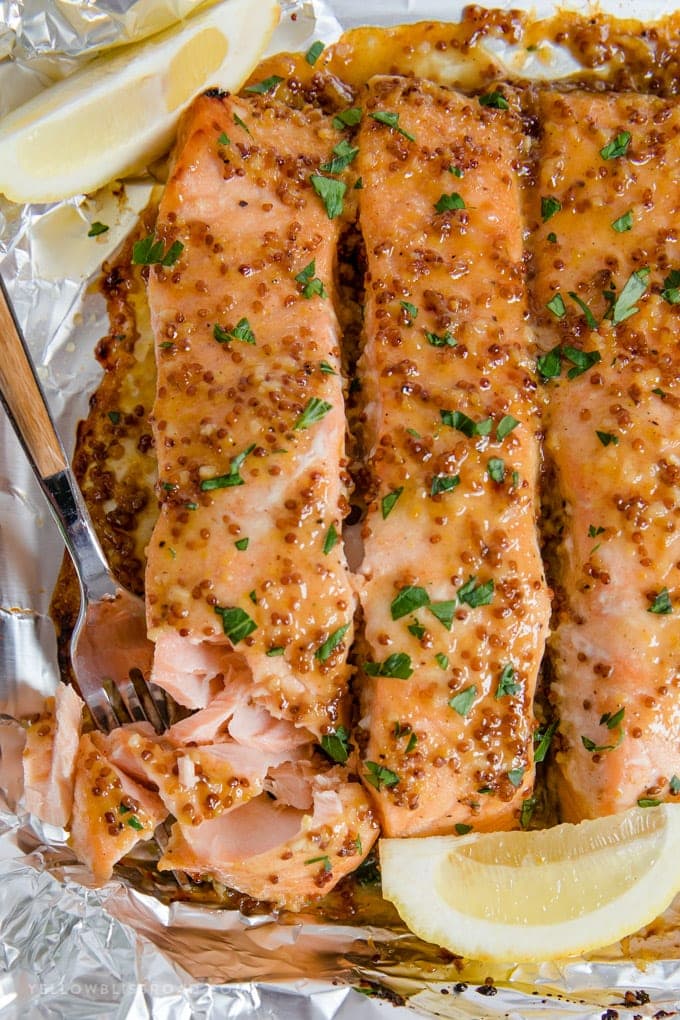
Seafood
Fresh, raw seafood should have a mild and fresh scent – it should not smell fishy or sour.
- Seafood (fish and shellfish) should be cooked to an internal temperature of 145°F.
- Shrimp – In addition to the temperature, shrimp is cooked when they are opaque and pink (not gray and translucent).
- Salmon – Salmon is considered fully cooked at 145°F (USDA recommendation). Many chefs prefer to cook salmon closer to a medium/medium rare which is closer to 125°F – 130°F.
- Clams, Mussels, Oysters – The shells should open during cooking. If any shells do not open, they should be discarded and not eaten.
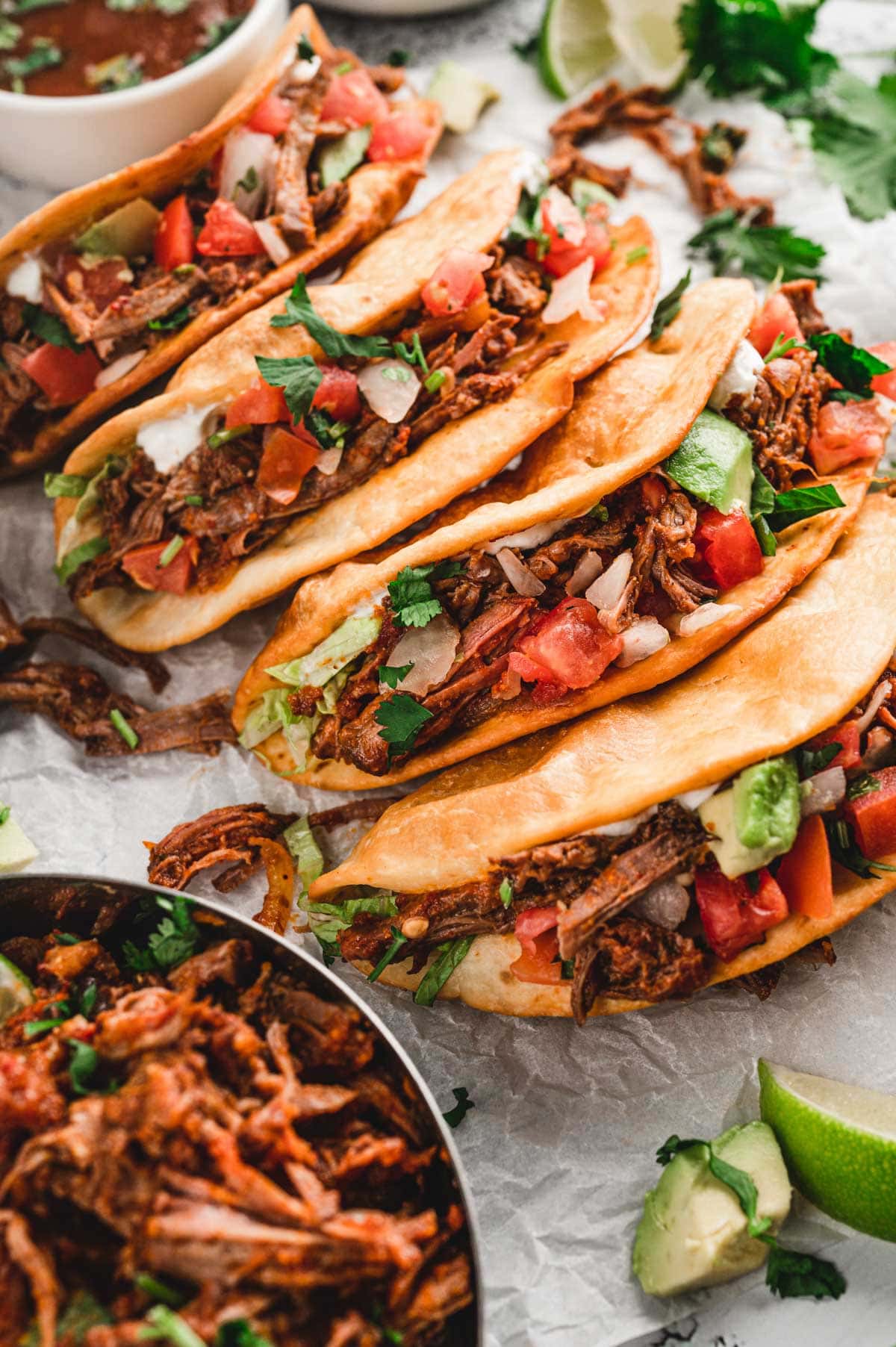
FAQs
According to the USDA, the “Danger Zone” is between 40 degrees F and 140 degrees F. This is the temperature range in that bacteria can grow rapidly. Hot food must be kept at 140 degrees F or warmer to prevent bacteria growth, and cold, perishable food (such as deli meat) should be kept at 40 degrees F or below.
In order to keep leftovers out of the “Danger Zone”, leftovers must be refrigerated within 2 hours of cooking (or in an appliance keeping the food warm, like a slow cooker). If the temperature of the environment is warmer than 90 degrees F (like outside at a backyard picnic in the summer) then the time is shortened to 1 hour.
Resting meat before cutting is key so that the juices can redistribute, but the temperature will continue to rise while it rests. It’s best to remove the meat from the heat about 5 degrees lower than the desired doneness and let it rest for about 5 minutes.
How would you rate yourself on your knowledge of food safety? Were you already a superstar or did you learn something new?
Share with us in the comments below or take it to social media! We’d love for you to tag us and share something you learned!
In case you missed it, click HERE for the free printable temperature guide for cooking!
